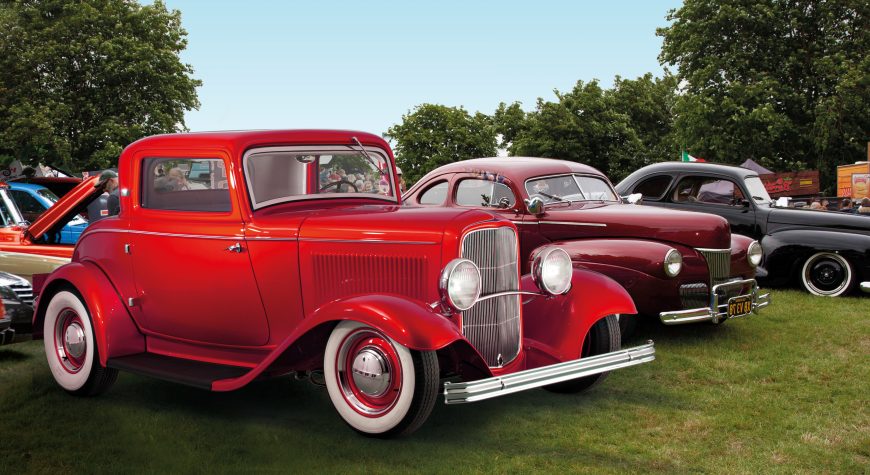RSS_Auto_Poster
Well-known member
Written by Dan Carney

We normally think of color as the product of the absorption of certain wavelengths to leave only the desired color to reflect. But it can also be produced by colorless surfaces that use an interference pattern to create colors. This is demonstrated by the blue Morpho butterfly, whose iridescent wings are a dazzling blue because of this interference, rather than traditional coloring. The Morpho"s wings look deep blue, but they"re actually colorless. The blue sheen we see is created by light interference on their microscopic lattice surface structure. Achieving such deep blue through refraction (and very special pigments) was the goal of a 15-year effort by Toyota engineers at the company"s Technical Centers in Ann Arbor, Michigan, and Japan, in partnership with Viavi Solutions Inc., a San Jose, Calif. provider of thin film optical coatings and pigments. Toyota"s Lexus luxury division first unveiled the finish in 2016 and now have developed an intensely complex process to offer it in extremely limited production. A production rate of just two cars a day means that Lexus will only build 300 Morpho blue LC500s in 2018. That"s because of the incredible number of steps in the process. Initially, it required 40 separate layers of material. But through years of refinement, Toyota engineers whittled this down to a seven-layer structure, making it practical for limited production use. "Practical" remains a relative term, however. The paint"s production process takes eight months and includes twelve production steps and 20 quality inspections along the way. The paint is applied in a 15-micrometer layer between the primer and clear coats where its 300 billion (per car) nano-structure flakes generate iridescence that creates the perception of color that constantly changes with the light, just like the Morpho butterfly"s wings. The color coat is an accumulation of ultra-thin, multi-layer film layers formed by a vapor deposition process that applies a thin layer of atoms of one material onto thin sheets of a polymer. This creates microscopic structures mimicking those found in nature as soap bubbles, on butterfly wings, or in sea shells and pearls, according to Lexus technical expert Paul Williamsen. As with butterfly, this surface has no color of its own. "The Structural Blue pigment material has no visible color until light reflects off of it," said Williamsen. "Controlling the size, shape and coating of this special boosts the reflectivity in a narrow range of deep blue color." To get the intended outcome, the layer"s thickness must be accurate within a few atoms. Conventional pigment paints reflect less than 50% of light as a visible blue color, but with Structural Blue the level is nearly 100%, which is what makes the finish so striking. Unsurprisingly, this process is time consuming, so Lexus technicians only build two Structural Blue cars a day at Toyota"s Motomachi factory.
Date written: 03-Dec-2017 08:26 EST
More of this article on the SAE International Website
ID: 10171

We normally think of color as the product of the absorption of certain wavelengths to leave only the desired color to reflect. But it can also be produced by colorless surfaces that use an interference pattern to create colors. This is demonstrated by the blue Morpho butterfly, whose iridescent wings are a dazzling blue because of this interference, rather than traditional coloring. The Morpho"s wings look deep blue, but they"re actually colorless. The blue sheen we see is created by light interference on their microscopic lattice surface structure. Achieving such deep blue through refraction (and very special pigments) was the goal of a 15-year effort by Toyota engineers at the company"s Technical Centers in Ann Arbor, Michigan, and Japan, in partnership with Viavi Solutions Inc., a San Jose, Calif. provider of thin film optical coatings and pigments. Toyota"s Lexus luxury division first unveiled the finish in 2016 and now have developed an intensely complex process to offer it in extremely limited production. A production rate of just two cars a day means that Lexus will only build 300 Morpho blue LC500s in 2018. That"s because of the incredible number of steps in the process. Initially, it required 40 separate layers of material. But through years of refinement, Toyota engineers whittled this down to a seven-layer structure, making it practical for limited production use. "Practical" remains a relative term, however. The paint"s production process takes eight months and includes twelve production steps and 20 quality inspections along the way. The paint is applied in a 15-micrometer layer between the primer and clear coats where its 300 billion (per car) nano-structure flakes generate iridescence that creates the perception of color that constantly changes with the light, just like the Morpho butterfly"s wings. The color coat is an accumulation of ultra-thin, multi-layer film layers formed by a vapor deposition process that applies a thin layer of atoms of one material onto thin sheets of a polymer. This creates microscopic structures mimicking those found in nature as soap bubbles, on butterfly wings, or in sea shells and pearls, according to Lexus technical expert Paul Williamsen. As with butterfly, this surface has no color of its own. "The Structural Blue pigment material has no visible color until light reflects off of it," said Williamsen. "Controlling the size, shape and coating of this special boosts the reflectivity in a narrow range of deep blue color." To get the intended outcome, the layer"s thickness must be accurate within a few atoms. Conventional pigment paints reflect less than 50% of light as a visible blue color, but with Structural Blue the level is nearly 100%, which is what makes the finish so striking. Unsurprisingly, this process is time consuming, so Lexus technicians only build two Structural Blue cars a day at Toyota"s Motomachi factory.
Date written: 03-Dec-2017 08:26 EST
More of this article on the SAE International Website
ID: 10171


